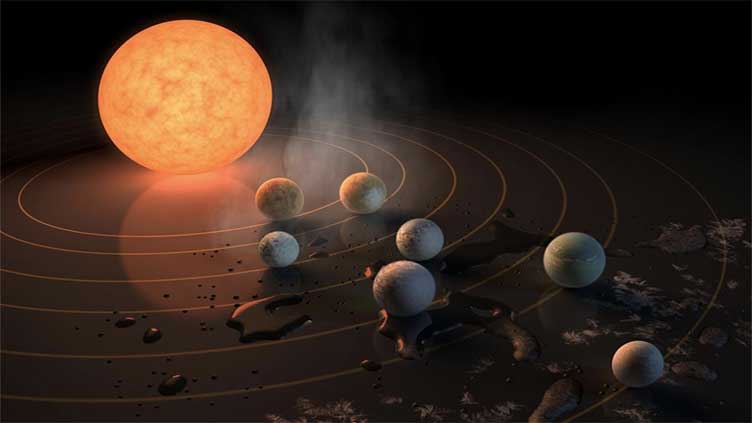Two Earth-Like Worlds Discovered in the Optimal Habitability Zone

WeirdNews
Two Earth-Like Worlds Discovered in the Optimal Habitability Zone
(Web Desk) - Several potential leads have recently emerged in the quest for life on distant planets: Two planets with masses comparable to Earth have been found in the habitable zone of the red dwarf star GJ 1002, according to astronomers.
The sweet spot between a planet being too hot or too cold to support life is the habitable zone around a star. Planets must be orbiting their star at a distance that would potentially allow for the presence of liquid water on their surface in order to be in this zone.
According to astrophysicist Vera Mara Passenger of the Instituto de Astrofsica de Canarias (IAC) in Spain, GJ 1002 is a red dwarf star that has just one-eighth the mass of the Sun. “It is a small, chilly star. Its habitability zone is hence quite close to the star.”
GJ 1002b and GJ 1002c are checking all the boxes so far, and at just 16 light-years distant from our Solar System, they’re near to where we are in the Universe, astronomically speaking. We’re still a long way from concluding that extraterrestrial life exists—or even that there is running water—but so far.
The star and its planets had to be found using two space-observing tools, ESPRESSO (Echelle Spectrograph for Rocky Exoplanets and Stable Spectroscopic Observations) and CARMENES (Calar Alto high-Resolution search for M dwarfs with Exoearths with Near-infrared and optical Echelle Spectrographs).
That’s because the faint light coming from GJ 1002 required extremely sensitive and exact sensors to identify its signatures. To find the planets, the research team employed 139 spectroscopic observations (measurements of deep space radiation) made between 2017 and 2021.
Except for their location, we don’t yet know anything about these celestial bodies. GJ 1002b orbits its star the closest, taking just over 10 days, while GJ 1002c orbits farthest away, taking just over 20 days.
The good news is that more thorough observations are made possible due to GJ 1002b and GJ 1002c’s close proximity. The next stage will be to determine whether they have atmospheres based on the heat they emit or the light they reflect.
Astrophysicist Jonay I. Gonzalez Hernandez from the IAC states that the upcoming ANDES spectrograph for the ELT telescope at ESO, in which the IAC is taking part, might investigate the presence of oxygen in the atmosphere of GJ 1002c.
There have already been observed 5,000 exoplanets or worlds outside of our solar system. We can see objects that are smaller and farther away from Earth as telescopes and data-processing systems advance.
Even though these far-off planets are light-years away in space, we are coming closer to being able to measure the chemical signs of life there because of these advances in technology.
Alejandro Suarez Mascaro, an astronomer with the IAC, believes that nature “seems focused on teaching us that Earth-like planets are very common.” With these two, there are currently seven planetary systems quite close to the Sun that we are aware of.


